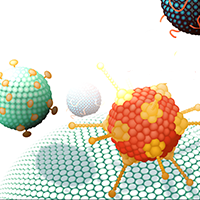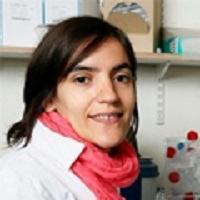Transmission Electron Microscopy: a Critical Component of the Vector Analytical Toolkit
Cell Gene Therapy Insights 2018; 4(10), 947-950.
10.18609/cgti.2018.084
Q Vironova offers both services and tools in the electron microscopy field – can you firstly give us some brief background on the company?
Vironova provides transmission electron microscopy (TEM)-based solutions for nanoparticle characterization.
We provide services offering a complete GMP-compliant TEM analysis package. Our in-house developed software solutions enable a high degree of automation when performing analysis. Moreover, we also provide non-expert hardware solutions that allow our clients to perform TEM at their workbench. The degree of automation that we were able to give to all our products helps to speed up time to result and to provide robust and objective information on morphological features and critical quality attributes as for example gene therapy vectors such as AAV. As part of the offer, we recommend our clients to choose the best solution for their question.
Q What specific types of data can TEM provide in AAV sample characterization, and what is its utility for gene therapy process and quality controls?
Our customers that work with gene therapy and AAV products usually have different questions to be addressed.
The most common question is that of the percentage of full capsids present in the sample. For that analysis we recommend cryo-preservation of the sample and offer a service that can be validated according to GMP standards.
In addition to the question of percentage of full capsids, we see an increase in the number of requests from customers to obtain information about the purity and overall morphology of their samples. With our hardware and software combined solution, we have built a powerful imaging analysis tool that provides visual information together with metrical data on the degree of impurities and integrity of the AAV particles. This solution allows our costumers to characterize the nature and level of impurities during different parts of product development.
Q You are seeing an increase in the number of requests for purity checks – why do you think this is becoming a bigger concern and what type of impurities are companies typically concerned about?
Gene therapy is a young field where the establishment of production protocols is still in implementation.
As more and more projects move into later clinical phases and manufacturers need to develop their commercial manufacturing processes they face new challenges. Moving from laboratory scale to larger scale means a high number of changes in upstream conditions. These changes may have an impact on the purity profile of the sample at different steps of the downstream process. Optimizing the different process steps to avoid impurities that affect final product quality and patient safety can be a daunting task. Having access to a combination of data from different reliable analytical solutions is the key to success. TEM will give an image of what is inside the tube, and the subsequent automated image analysis would convert the structures in the image to accurate metrical data that reflect the portion of different contaminants in relation to intact particles in the sample.
The typical impurities that can occur and can be revealed by TEM are broken particles, proteasomes, protein or membrane-based cell debris and residual DNA. Our experience from the different type of samples and their different impurities detection, allowed us to develop robust automated analysis solutions.
Q Based on this experience, what is your recommendation to gene therapy developers – should they introduce purity checks at an early stage?
Yes definitely, the earlier you start to understand your process limits and think about scale up the better – this means you need to monitor the purity profile of your samples to understand how to best optimize the different process steps.
It’s often more expensive to find out later that your product contains undesired impurities and you need to start all over with the process development. The best is to keep track of this from the beginning.
Q Vironova also provides proprietary software tools that can perform automated work in electron microscopy – what specific advantages does this offer to non-experts in this particular technology field?
Automation means robustness, less user variability and higher reproducibility, it also means you can do more analyses in shorter time.
Getting informative analytical data faster means that you can make better informed decisions and get to an optimized process sooner. The MiniTEM instrument that Vironova brings to this market can be placed in a standard lab close to your process, it is an effective in-house solution for those who need to analyze a high number of samples routinely. Also, for our services automation means we are able to answer to a higher number of customer requests and be agile with our response.
Q We’ve discussed AAV in particular today, but how do you see TEM being applied more widely into the biopharmaceutical space?
Our solutions fit equally well for the analysis of other viral or nanoparticles products where morphological characteristics are critical attributes.
Our technology can be used in the analysis of other types of gene therapy vectors such as adenovirus and retroviruses. Moreover, some other examples where our technology is successfully applied are the following: in the development of Virus Like Particles for different types of vaccines, vaccines adjuvants such as ISCOM particles, liposomes and lipid nanoparticles used in the drug and gene deliver field and many others. As long as the sample can be analyzed by transmission electron microscopy we work together with our clients to provide them with a suitable solution to help to develop their processes.
Affiliation
Vanessa Carvahlo
Senior scientist at Vironova AB, Stockholm, Sweden

This work is licensed under a Creative Commons Attribution- NonCommercial – NoDerivatives 4.0 International License.



